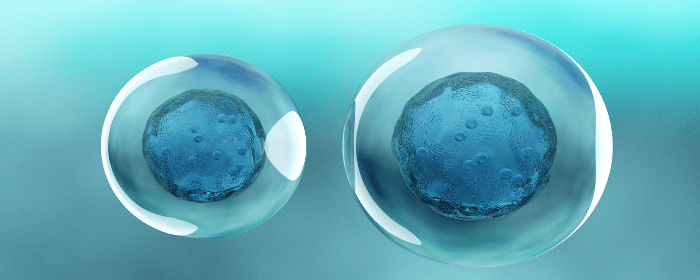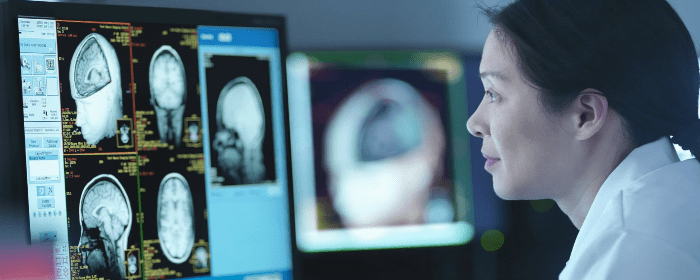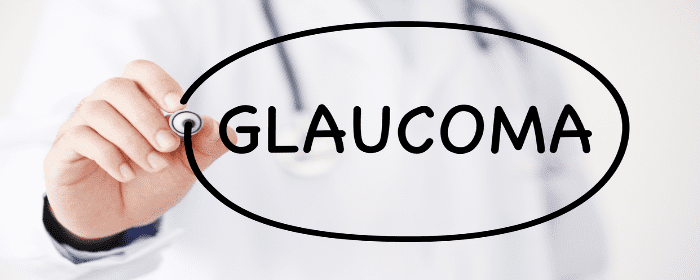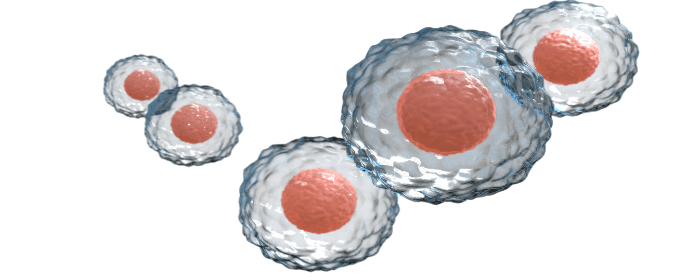
by admin | Jun 4, 2021 | Stem Cell Therapy, COPD, Stem Cell Research
For patients facing a lung disease, including COPD, current and traditional therapeutic options may not be as effective in managing symptoms or slowing the progression of the condition so researchers have turned their attention to the potential benefits of stem cell therapy and ex vivo lung bioengineering in hopes of developing new and effective therapeutic approaches to treat lung disease.
Demonstrating a rapid progression over the last decade, the development of stem cell therapies and bioengineering approaches for lung disease has primarily shifted focus to the application of immunomodulatory and paracrine actions of mesenchymal stem cells (MSCs) and endothelial progenitor cells (EPCs) and the field of ex vivo lung bioengineering.
In this manuscript, Weiss reviews clinical trials in lung disease and provides the current progress for a variety of therapeutic options. Specific treatments reviewed include:
- Structural Engraftment of Circulating or Exogenously Administered Stem Cells
- Ex Vivo Derivation of Lung Epithelial Cells from Embryonic Stem Cells or Induced Pluripotent Stem Cells (iPS)
- Endogenous Lung Stem and Progenitor Cells
- Circulating Fibrocytes
- Endothelial Progenitor Cells
- MSCs and Immunomodulation of Lung Disease
The author points out that although preclinical literature supports the use of EPCs and MSCs in acute lung injury and/or chronic inflammatory and immune-mediated conditions (including asthma, bronchiolitis, obliterans, and bronchopulmonary dysplasia), these preclinical models are not always predictive of clinical behaviors. As such, clinical investigations of these cell-based therapies for lung disease have been slow to develop.
Currently, the only effective treatment for severe lung diseases, including BPD, CF, COPD, and IPF, is lung transplantation. With a 50% five-year post-transplant mortality rate, essential lifelong immunosuppression (to prevent chronic lung rejection), and a critical shortage of donor’s lungs, research has turned its attention toward manufacturing surgically implantable ex vivo (or “outside the living body”) lung tissue. While several challenges still exist, recent significant progress has been made using both synthetic and donor tissue in generating ex vivo tissue for use in various lung treatment applications.
The author concludes that while exciting progress has been made in the field of stem cell therapy and ex vivo generation of tissue to treat lung diseases, much research is still on the horizon. Within future research, they hope to better understand the identity of endogenous lung airway, the development of functional airway and alveolar epithelial cells from ESCs and iPS cells, and a better understanding of the physiologic and pathophysiologic roles of EPC and Fibrocytes in lung diseases.
The use of stem cell therapy and ex vivo lung bioengineering offers tremendous potential for the treatment of lung diseases, however, the clinical use of artificial engineered or decellularized scaffolds for use in treating lung disease is likely to be several years off.
Source: (n.d.). Current Status of Stem Cells and Regenerative Medicine in Lung …. Retrieved from https://www.ncbi.nlm.nih.gov/pmc/articles/PMC4208500/

by admin | May 14, 2021 | Stem Cell Therapy, Mesenchymal Stem Cells, Stem Cell Research, Traumatic Brain Injury
According to the CDC, in 2019, traumatic brain injury (TBI) contributed to nearly 61,000 deaths in the United States alone[1]. While there are several clinical treatments designed to address the neurological dysfunction after sustaining a TBI, including hyperbaric oxygen, brain stimulation, and behavioral therapy, none appear to produce satisfactory or lasting results.
In recent years, several studies have demonstrated the therapeutic potential of various stem cells, including mesenchymal stem cells (MSCs), neural stem cells (NSCs), Multipotent adult progenitor cells (MAPCs), and endothelial progenitor cells (EPCs) in the treatment of neurological impairment resulting from TBI. Specific benefits of these stem cells observed throughout these studies demonstrate that exogenous stem cells have the ability to migrate to the site of damaged brain tissue, help to repair damaged tissue, and significantly improve neurological function.
In this article, Zhou et al. review recent findings on the role, effects, deficiencies, and related mechanisms of the various stem cells being used as therapeutic agents in the treatment of TBI.
Examining numerous studies occurring between 2010-17 and exploring various TBI models and the roles of different stem cells in animal models, the author’s general summary is that the use of stem cells demonstrated some form of measurable improvement in every study reviewed. As a reference, specific observed benefits included improved integrity of the blood-brain barrier; improved neurological function, social interaction, and motor performance; enhanced neurovascular repair and recovery; and enhanced cognitive and spatial learning, information retention, and memory retrieval.
The authors point out that although there appears to be a large amount of research exploring the complexity of pathophysiology and the application of stem cell therapy for treating TBI, many problems still exist and must be addressed before the best method for TBI recovery can be determined.
Specifically, while there have been several clinical studies exploring the role of stem cells in the role of TBI treatment and recovery, and while most demonstrate promising results, the studies have almost universally been completed on mice and/or rats, contained human sample sizes that are not large enough, or failed to include a control group. As a result, Zhou et al. call for further study, including multi-center long term follow-up and randomized prospective trials that examine the safety of stem cells, route of injection, the time of injection, and the specific mechanisms as a way to identify the appropriate and effective stem-cell-based therapeutic treatment options for those suffering from various types of TBI.
Source: (2019, August 13). Advance of Stem Cell Treatment for Traumatic Brain Injury. Retrieved from https://www.ncbi.nlm.nih.gov/pmc/articles/PMC6700304/
[1] (2021, May 12). Get the Facts About TBI | Concussion …. Retrieved from https://www.cdc.gov/traumaticbraininjury/get_the_facts.html

by admin | Apr 30, 2021 | Neurodegenerative Diseases, Stem Cell Research, Stem Cell Therapy
Neurodegenerative disease is a broad term encompassing a number of chronic, progressive diseases that result in degeneration and or death of neurons; these diseases include Parkinson’s disease (PD), Alzheimer’s disease (AD), and amyotrophic lateral sclerosis (ALS) and affect over 50 million Americans each year[1][2].
Since neurons possess a very limited ability to reproduce and/or replace themselves, any damage to these cells tends to be permanent and contributes to incurable and progressive debilitating conditions affecting physical movement and mental function.
While research has determined that these neurodegenerative diseases are primarily a result of the accumulation of misfolded proteins in the brain, the specific cause of these conditions remains unknown; additionally, the complexity of these conditions often lead to delayed diagnosis, most often a result of the lack of effective and recognizable biomarkers. To date, no preventative treatment for these conditions exist and any current treatment serves to only delay the progression of the disease, most often with poor results.
In this article, Yao et al. explore the viability of using mesenchymal stem cells (MSCs) as cell replacement therapy for treating neurodegenerative diseases. According to the authors, MSCs demonstrated the ability to self-renew and differentiate coupled with their relative ease of collection, isolation, and ability to culture and their immunoregulatory properties make them a promising potential treatment option.
Although the specific therapeutic mechanisms of MSCs in the treatment of neurodegenerative diseases are still being studied, they have shown potential in three specific areas: homing, paracrine, and immunoregulation.
Homing involves MSCs ability to spontaneously migrate to damaged regions of the body, making them a viable therapeutic treatment option – especially as a carrier of therapeutic drugs. It is hypothesized that MCS’s ability to home should allow drugs to be attached and to pass through the blood-brain barrier to be delivered to locations in the CNS and brain that are affected by neurodegenerative diseases.
Paracrine, or paracrine signaling, is a cell’s ability to release hormones that communicate with the cells in its vicinity. MSCs ability to secrete growth factors, cytokines, chemokines, and various enzymes are important aspects of cell migration and immune regulation. Animal studies have demonstrated using MSC-derived exosomes to improve symptoms associated with muscle atrophy translates into a promising clinical treatment strategy for neurodegenerative diseases.
MSCs are undifferentiated precursor stem cells with low immunogenicity. Researchers attribute the immunoregulation of MSCs to their various interactions with T cells, B cells, and natural killer cells. Animal studies have shown that placental-derived MSCs have demonstrated beneficial effects, particularly in mice with AD; researchers hypothesize that this effect is a result of these MSCs inhibiting the release of inflammatory cytokines, preventing cognitive impairments, and increasing the survival rate of neurons and nerve regeneration. These findings have demonstrated the potential for immunosuppressants, in combination with MSCS, to be used in future clinical treatments of neurodegenerative diseases.
After reviewing numerous in vitro and in vivo experiments in animal models, the researchers have confirmed the potential therapeutic benefits of MSCs as well as their safety and effectiveness in a wide variety of therapeutic applications. Additionally, studies have also demonstrated no serious or concerning adverse reactions associated with clinical trials (both human and animal) using MSCs from autologous or allogeneic sources.
However, Yao et al. caution that as therapies using MSCs continue to develop, so too should the process used for preparing MSCs as well as that used for determining ideal method and dose for patients; taking these steps will contribute to a deeper understanding of MSCs potential when used as a therapeutic treatment for neurodegenerative diseases.
Source: (2020, July 20). Mesenchymal Stem Cells: A Potential … – Karger Publishers. Retrieved from https://www.karger.com/Article/Fulltext/509268
[1] “What? | JPND.” https://www.neurodegenerationresearch.eu/what/.
[2] “Neurodegenerative Diseases: An Overview of … – NCBI – NIH.” https://www.ncbi.nlm.nih.gov/pmc/articles/PMC1280411/.

by admin | Apr 23, 2021 | Glaucoma, Stem Cell Research, Stem Cell Therapy
Glaucoma is a group of eye conditions that damage the optic nerve and lead to progressive, irreversible loss of vision. With over 80 million people affected by the condition, glaucoma is the second-leading cause of blindness, behind only age-related macular degeneration.
Although there are several different risk factors, the most understood and treatable risk factor for glaucoma involves controlling the eye’s intraocular pressure, or IOP. When left unaddressed, glaucoma progressively leads to vision loss resulting from damage to axons and associated retinal ganglion cells (RGCs) responsible for transmitting visual information from the eye to the brain. While current treatments for glaucoma are primarily pharmacologic, laser-based, and surgical procedures designed to lower and/or control IOP, they are unable to reverse or restore vision lost as a result of previous damage to the affected axons, RGCs, and the collective optic nerve.
Chanling, Slush, and Zack’s article aim to assess current literature and developments exploring the potential of using human stem cells to further study, and potentially treat, glaucoma and other conditions affecting the optic nerve. For the purposes of this review, the authors divide their discussion into four key areas: stem cell-derived trabecular meshwork cells to control IOP; stem cells as a source of RGCs; stem cell-derived RGCs for transplantation and vision restoration; and stem cells as a source for neurotrophic factors.
Stem Cell-Derived Trabecular Meshwork Cells to Control IOP
Insufficient drainage of the eye’s aqueous humor results in increasing IOP. Current medication for the treatment of this condition reduces aqueous production and or increases aqueous outflow through the trabecular meshwork (TM). Since the TM is a known source of stem cells, researchers hypothesize that these cells and specifically mesenchymal stem cells (MSCs) could be used to repair IOP function and potentially restore vision lost as a result of this condition.
Recent studies have shown promising results, leading researchers to believe that there is a strong possibility of using stem cell-derived TM cells to preserve optic nerve function and reduce IOP.
Stem cells as a Source of RCGs
In addition to assisting with regulating IOP, researchers believe that stem cells may also be able to preserve, and even restore, RCG function – which is ultimately responsible for vision loss caused by glaucoma.
Specifically, the authors point to a number of animal studies that have demonstrated positive responses in a number of signaling pathways and neuroprotective compounds responsible for promoting RNC function and survival. The authors also point out that, while these studies are promising, none have made it to the clinic.
Stem Cell-Derived RGCs for Transplantation and Vision Restoration
While still a relatively new concept, there has been tremendous progress made in the ability to transplant RCEs and photoreceptor cells in the eye. Coupled with the observed differentiation of RGCs, researchers believe the ability to successfully transplant RGCs, with the intent of restoring glaucoma-related vision loss, is not far off.
The authors note that, while these findings are promising, there is still much work and additional research to be completed in this area and that the process of transplanting RCGs is much more complicated than the process used for transplanting retinal pigment epithelial cells (RPEs) and photoreceptors cells.
Stem Cells as a Source for Neurotrophic Factors (NTFs)
Research suggests that deprivation of the NTF required for maintenance and survival of neurons is a leading factor in the progression of glaucoma. As a result, additional research has reported that supplementing additional BDNF and other NTFs, through the use of stem cells appears to support the health and survival of RGC. The authors point out that, while promising, the process required during this procedure is challenging, primarily because it requires the blood-retinal barrier to be circumvented.
The authors of this review conclude that, as a result of the rapidly advancing pace of ocular stem cell research and related ongoing advancements in stem cell technology, there are ongoing opportunities to better understand and improve upon the current glaucoma-related biology and to develop pharmacological models that include cell-based therapies in the effort to restore vision to those affected by glaucoma.
Source: (n.d.). The Potential of Human Stem Cells for the Study and … – IOVS from https://iovs.arvojournals.org/article.aspx?articleid=2518375

by admin | Apr 9, 2021 | Mesenchymal Stem Cells, Spinal Cord Injury, Stem Cell Research, Stem Cell Therapy
Spinal cord injury (SCI) continues to be a significant cause of disability. In fact, it is estimated that annual SCIs account for nearly 18,000 injuries in the United States and between 250,000 and 500,000 injuries worldwide[1]. Additionally, an estimated 294,000 people in the United States are currently living with some form of SCI, with males accounting for nearly 80% of all SCI injuries[2].
Despite a large number of SCIs occurring each year, therapeutic treatment options remain limited and primarily ineffective. Recently, improvements in the understanding of the promising role stem cells play in the healing process have led to significant developments in improving healing and restoring function lost as a result of Spinal Cord Injuries; specifically, the therapeutic treatment of SCIs with mesenchymal stem cells (MSCs) in animal models has demonstrated promising results.
Building off of the success observed in previous studies, Honmou Et al.’s recent study (2021) sought to further explore the safety and feasibility of intravenous infusion of MSCs is SCI patients; the study also explored the patients’ functional status after receiving IV infusion of MSC.
Specifically, Honmou Et al.’s phase 2 study delivered a single infusion of autologous MSCs cultured in auto-serum, to 13 SCI patients. After infusion, the study assessed the feasibility and safety of this procedure over a six-month period by using the American Spinal Injury Association Impairment Scale (ASIA) and International Standards for Neurological Function Classification of Spinal Cord (ISCSCI-92). The researchers also used the Spinal Cord Independence Measure (SCIM-III) as a way to assess the ability of daily living after receiving MSCs infusion.
Although this was a small, early, unblinded, and uncontrolled study, the researchers point out that the intravenous infusion of autologous bone marrow-derived MSCs, expanded in auto-serum, into SCI patients appeared to be safe and feasible with none of the patients exhibiting abnormal cell growth or neurological deterioration. Additionally, and similar to what’s been observed in prior studies conducted on animal models, the findings appear to support the rapid improvement of neurological function within a few days after IV infusion. The researchers also pointed out this study had several limitations, including potential observer bias and potential improvements resulting from surgical interventions.
The researchers point out that although the specific mechanism for this observed improvement in neurological status is not clear, several studies suggest that secreted neurotrophic factors from MCSs might be associated with the rapid improvements. Additional studies have also demonstrated that IV infusion of MSCs in patients with SCIs might also encourage changes in gene expression that encourage functional improvements, an observation that was consistent with the findings of this study.
In conclusion, the authors reiterate that the observed safety, feasibility, and initial indications of functional improvement after MSC infusion support the importance of additional, larger future studies designed to examine potential efficiencies in patients with SCI. Source: (2021, February 18). Intravenous Infusion of Auto Serum-expanded … – ScienceDirect.com. Retrieved March 23, 2021, from https://www.sciencedirect.com/science/article/pii/S0303846721000925#!
[1] “Spinal cord injury – WHO | World Health Organization.” 19 Nov. 2013, https://www.who.int/news-room/fact-sheets/detail/spinal-cord-injury.
[2] “(SCI) Facts and Figures at a Glance – National Spinal Cord Injury ….” https://www.nscisc.uab.edu/PublicDocuments/fact_figures_docs/Facts%202015.pdf.

by admin | Apr 2, 2021 | Stem Cell Therapy, Mesenchymal Stem Cells, Osteoarthritis, Stem Cell Research
Osteoarthritis (OA), the most common form of arthritis, affects over 32 million people in the U.S. each year. Characterized by a progressive degeneration of cartilage resulting in pain, stiffness, and swelling in the joints, and most frequently occurring in the hands, hips, and knees, OA has no pharmacological, biological, or surgical treatment to prevent progression of the condition. The authors of this case report focus specifically on potential treatment options for OA of the knee.
With the emergence of stem cell-based therapies for a multitude of health conditions, stem cells, and specifically mesenchymal stem cells (MSCs), have demonstrated immunosuppressive activities that could prove beneficial in supporting the regeneration of cartilage tissue in and around joints in the body.
Research has demonstrated that MSCs are effective in differentiating into essential connective tissues like fat, cartilage, and bone; MSCs have also demonstrated immunomodulatory and anti-inflammatory effects, the ability to self-renew, and plasticity, making MSCs a potentially powerful treatment of OA in the knee (and other parts of the body).
This specific case study details cartilage regeneration in the knee of a 47-year-old woman diagnosed with OA when treated with bone marrow-derived MSC cells. For the course of this treatment, autologous MSCs were collected from bone marrow harvested from the iliac crest. After processing and preparing the MSCs, the sample was confirmed to be free of microbial contamination and was prepared and transplanted into the patient’s knee joint.
Periodic follow-ups with the patient revealed no local or systemic adverse events associated with the MSC transplant procedure. The authors of this case report found that the patient’s functional status of her knee, the number of stairs she could climb, reported pain on a visual analog scale, and walking distance all improved in the two months following the MSC transplant procedure.
Additionally, twelve months after the transplant, the patient demonstrated a positive change in WOMAC (3 to 2), a continued increase in the number of stairs climbed (5 increasing to 50), and visual analog (80 mm to 11 mm). The patient also demonstrated improved gelling (or the amount of time it takes for synovial fluid to thicken as a result of rest) in the knee from 8 minutes to 30 minutes; knee flexion also increased 20° (100° to 120°). Periodic MRIs taken after the transplant procedure demonstrated an extension of the repaired tissue over the subchondral bone.
Mehrabani, et al. conclude that MSC transplantation for treating OA in the knee appears to be a simple, safe, effective, and reliable treatment option that has demonstrated pain relief, improved quality of life, and significantly improved quality of cartilage without hospitalization, pharmaceuticals, or surgery.
Source: (n.d.). The Healing Effect of Bone Marrow-Derived Stem Cells … – NCBI – NIH.; from https://www.ncbi.nlm.nih.gov/pmc/articles/PMC5003953/







 St. Petersburg, Florida
St. Petersburg, Florida
